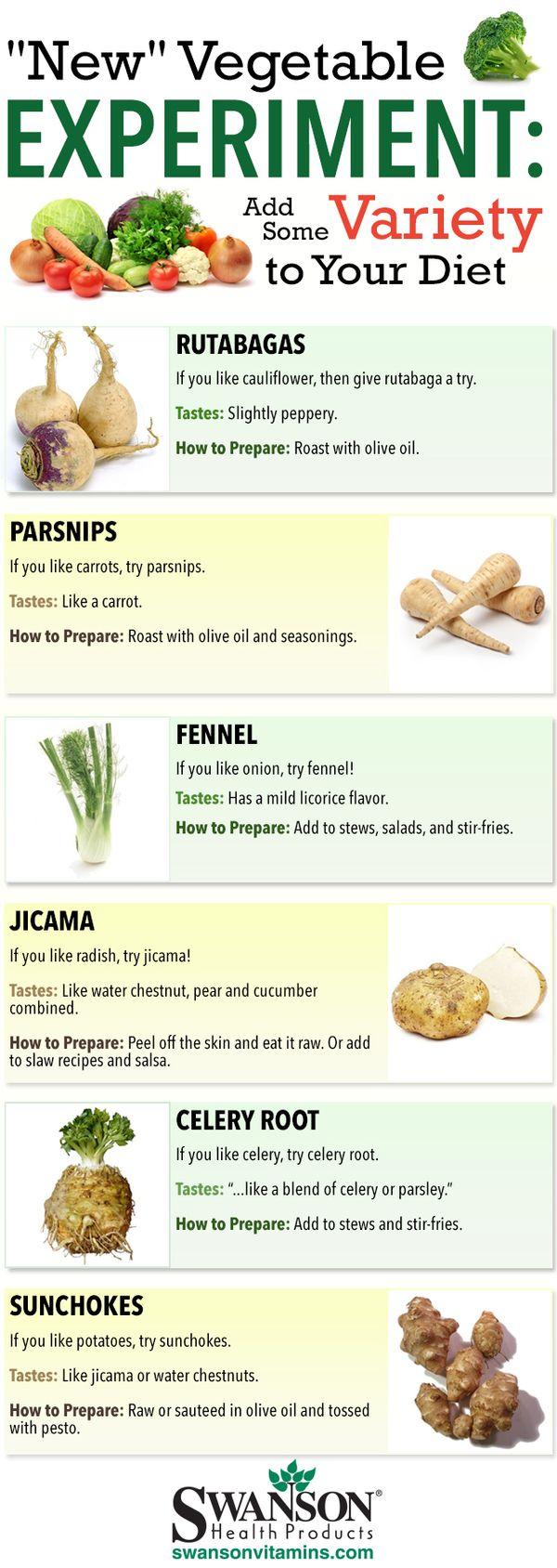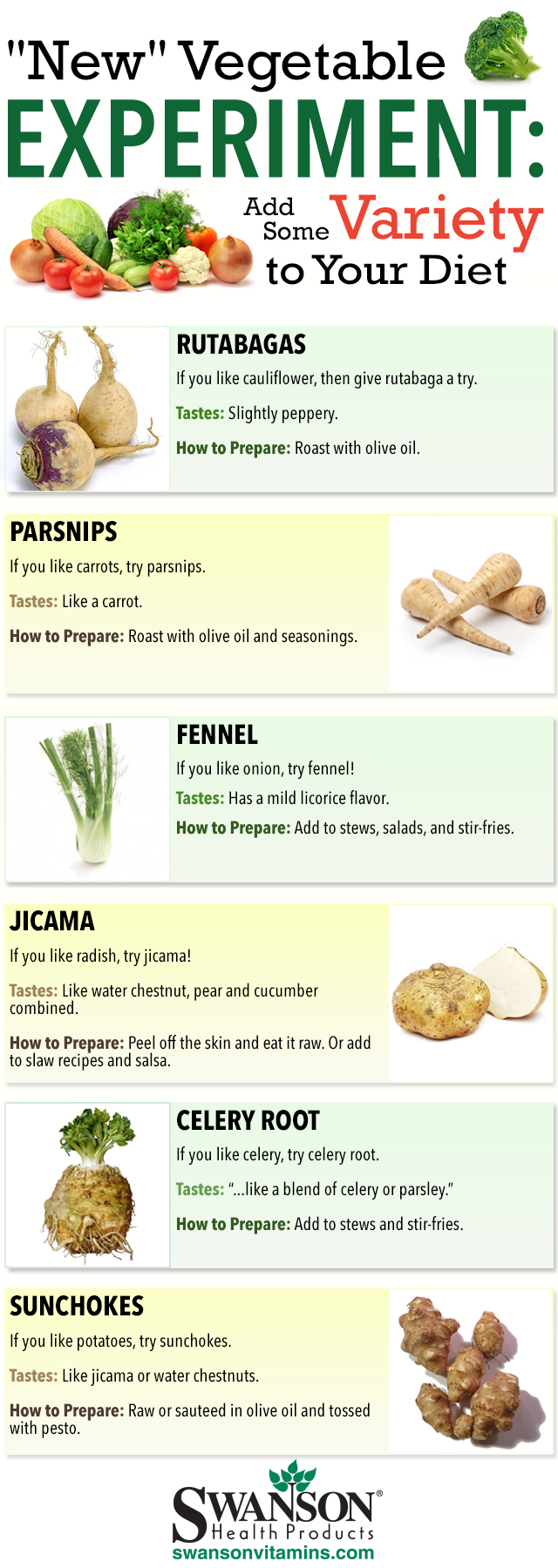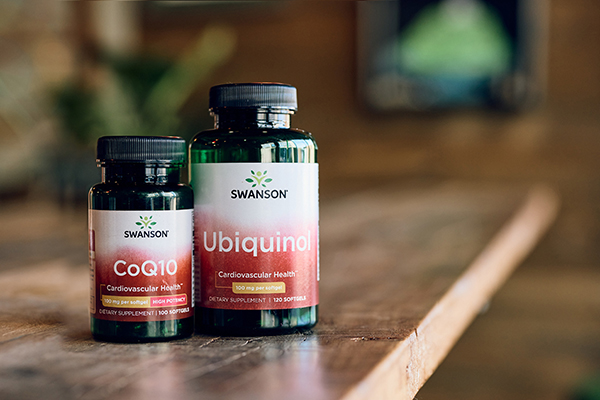Learn to Try New Vegetables
Trying to incorporate more vegetables into your diet, but stuck in a rut of carrot sticks and steamed broccoli? This post will introduce you to a few items you've seen at the grocery store but have no idea what to do with. The goal is to help you expand vegetable repertoire and learn to enjoy some new, healthy foods.
Rutabegas
If you like the taste of cauliflower, then give rutabaga a try. It’s the purplish white root vegetable with 4 grams of fiber in a one-cup serving. More fiber in your diet translates to better digestive and heart health.
Rutabaga has a slightly peppery taste and is delicious when roasted with olive oil. Or try it mashed: peel and cube two pounds of rutabaga, then boil or steam for 10 minutes or until tender. Mash and add 1/3 cup of low-fat milk, 2 tablespoons of sage, 1 tablespoon of grainy mustard, and salt and pepper to taste.
Parsnips
If you like carrots, try parsnips! Shaped like carrots, they are thicker and are usually white in color. Rich in fiber, parsnips also contain potassium, which supports fluid balance, muscle and nerve health.
Because of their woody texture, parsnips taste best cooked. Try them roasted: peel and slice one pound of parsnips into match sticks. Blend 1 tablespoon organic olive oil, 1 tablespoon fresh or dried rosemary and season to taste. Toss mixture with parsnips. Bake in a 400 degree oven for 30 minutes or until tender.
Fennel
Looking for ways to bust out of a vegetable rut? If you like onion, try fennel! However, if you don’t like the taste of licorice, you might be wary of fennel.
Its mild licorice flavor does tend to mellow a bit after it’s cooked, though. All parts of this root vegetable are edible—the stalks, wispy tips and white bulb. Fennel has more vitamin C and fiber than onion. Add it to stews, salads or stir-fries.
Celery Root
Trying to incorporate more vegetables into your diet, but stuck in rut of peas and carrots? Here’s another tip on how to expand your vegetable repertoire.
If you like celery, try celery root, also known as celeriac. This unusual vegetable has bumpy skin “but tender flesh that tastes like a blend of celery or parsley.” Celery root contains 80% of the daily recommended intake of vitamin K in a one-cup serving. Vitamin K supports bone and circulatory health. Although tough to peel, remove about half an inch of the tough skin. Add sliced celery root to soups or stir-fries.
Jicama
If you like radish, try jicama! Pronounced “hick-a-ma,” it’s also known as the Mexican potato, but it doesn’t taste like a potato. This crispy vegetable tastes more like a water chestnut, pear and cucumber combined. One cup of jicama contains 46 calories and 6 grams of fiber! It’s also loaded with vitamin C.
Peel off the skin and eat it raw! Jicama can be shredded and added to slaw recipes or chopped and added to salsa.
Sunchokes (Jerusalem Artichokes)
Last but not least, if you like potatoes, try sunchokes! Also known as Jerusalem artichokes, their flavor is similar to jicama or water chestnuts. Rich in iron, sunchokes also contain inulin, the soluble fiber that helps support digestive health. Sunchokes can be eaten raw (their skins are edible, too), or try them sautéed in olive oil and tossed with pesto.
Take Action
Set a reasonable goal to simply buy and try one of these items. Then, move on to another one. If you buy all of them at once, you may feel overwhelmed and end up not eating them at all.
How many of these vegetables have you tried? Have you actually purchased and prepared them yourself?




